- October 18, 2023
7 Norwegian Dog Breeds: Pictures, Facts & History
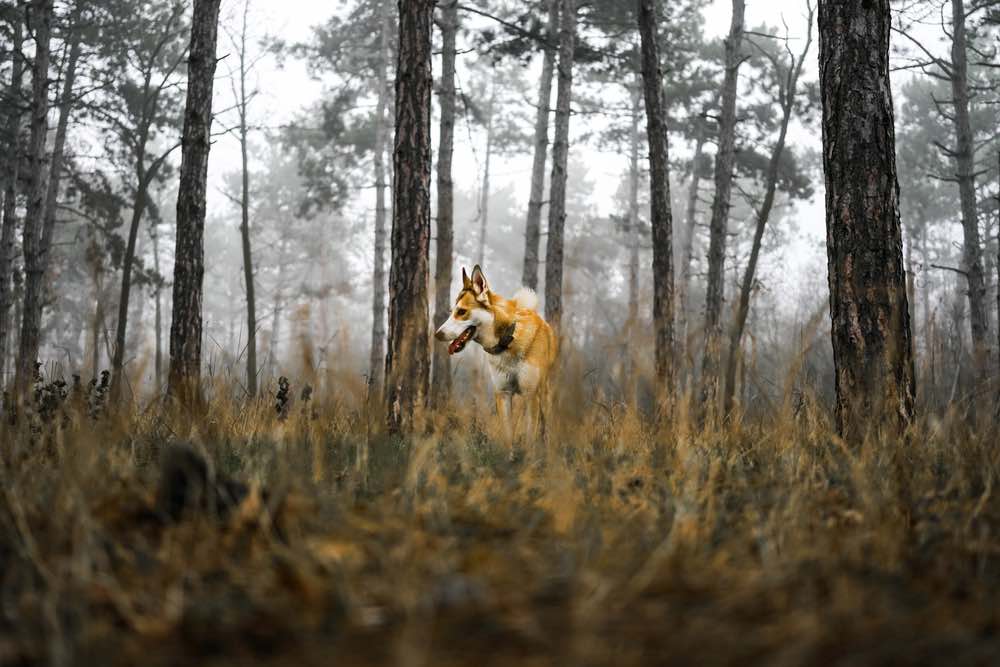
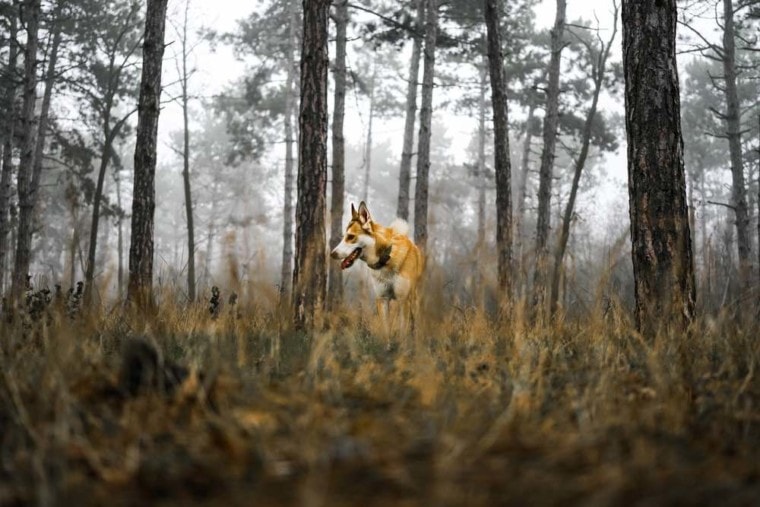
Cutting into the frigid Arctic Circle, Norway can seem a world unto itself, and one look at the country’s native dog breeds proves as much. Norway’s canines are cold-hardy, rugged, and well-suited for their country’s demanding climate. They are rare to find and fascinating to discover. Discover what sets these animals apart in this breakdown of the seven Norwegian dog breeds.

How Are Norwegian Dog Breeds Classified?
Norwegian civilization has featured companion dogs for over 5,000 years, primarily spitz-type breeds with wolfish features, including upright ears and pointed snouts. Thick double coats keep them comfortable in the colder climate.
Scent hounds are prominent in Norwegian culture, primarily for hare hunting. The small and medium-sized dogs would sniff out, pursue, and bay game while rattling loud barks to alert the hunters. Unlike the older Spitz dogs, scent hounds have downward-facing tails, shorter coats, and floppy ears to stir up and enhance the scent trail.

The 7 Norwegian Dog Breeds
1. Norwegian Lundehund
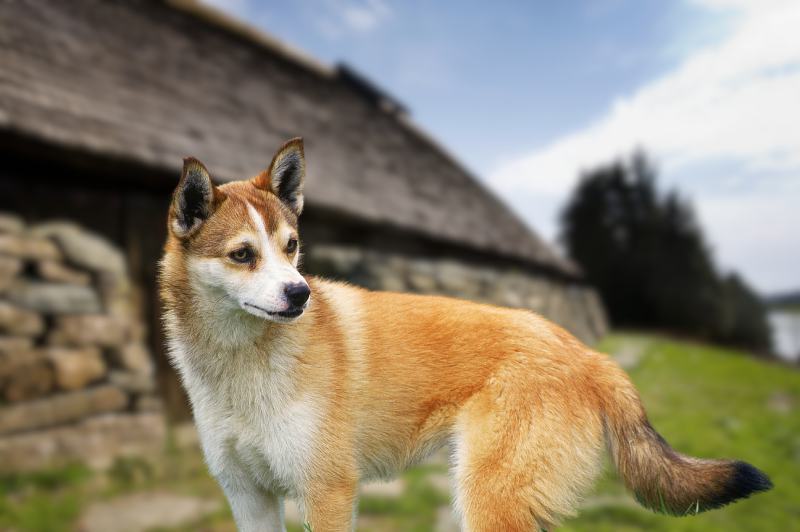
| Origin: | 15th century, Lofoten Islands |
| Lifespan: | 12–15 years |
| Height: | 12–15 inches |
The Norwegian Lundehund is a small dog of ancient origin. For centuries, the Lundehund played an essential role in puffin hunting (“lundehund” means “puffin dog”) along the country’s steep coastal cliffs due to a singular set of physical traits.
Lundehunds have six muscular toes on each foot, providing extra grip while hunting. They’re remarkably flexible, sporting a neck that can crane back to the spine, ears that fold and seal against the head, and forelegs that can move 90 degrees sideways. The ability to contort their bodies was critical when pursuing puffins on steep inclines and narrow hideaways.
2. Norwegian Buhund
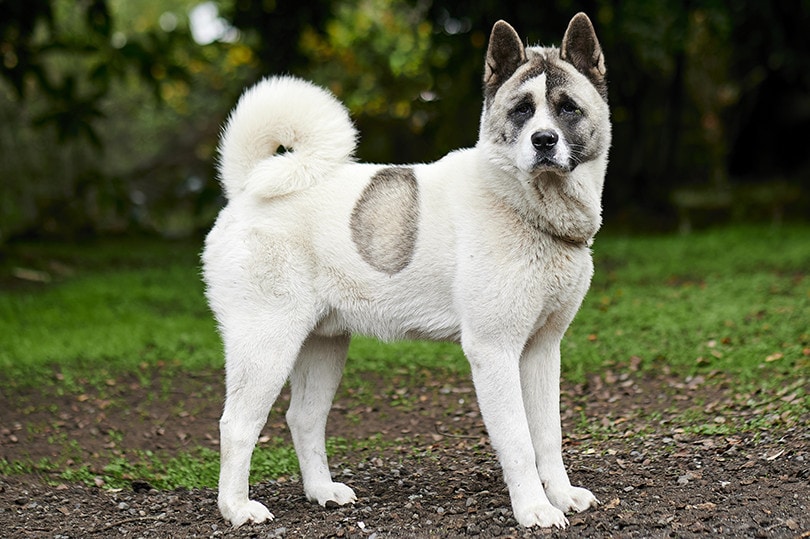
| Origin: | 9th century |
| Lifespan: | 12–15 years |
| Height: | 16–18.5 inches |
Norwegian Buhunds are another ancient Spitz-type breed with an appearance truer to their origins dating to the land’s initial settlement. The small–medium dogs were a favorite companion of Vikings around the 9th century, often accompanying their owners from the towns they pillaged to their final resting place.
Buhunds were primarily herding dogs for cattle, reindeer, pigs, and small livestock but also versatile farm hands for any work their owners demanded. Populations declined in the early 1900s as they lost popularity to new incoming dogs, but a devoted following for this low-numbering breed persists to this day. Though they can be stubborn, Buhunds earn admiration for their intelligence, confidence, and energy.
3. Norwegian Elkhound Grey
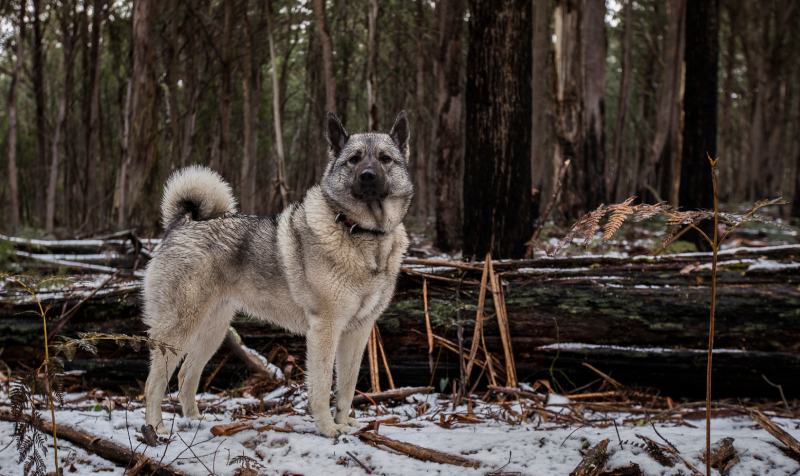
| Origin: | 19th century |
| Lifespan: | 12–15 years |
| Height: | 19–21 inches |
The Norwegian Elkhound is Norway’s national dog and enjoys the most representation of its native breeds. The Norwegian Elkhound Grey has been popular since they were standardized in 1905. As a versatile dog with Spitz origins, their courage made them a desirable companion for hunting big game, including elk and bears.
Norwegian Elkhounds make quality pets despite their independence and stubbornness. They are highly energetic and need ample exercise but are otherwise well-known for their devotion, playfulness, and friendly attitudes.
4. Norwegian Elkhound Black

| Origin: | 19th century |
| Lifespan: | 12–15 years |
| Height: | 19–21 inches |
The Black Norwegian Elkhound is another small Spitz-type dog similar to the Grey Norwegian Elkhound, save for their darker coat. The Black Elkhound excelled at leashed tracking during big game hunting for elk and bears.
Though their background makes them slightly more stubborn than their gray cousins, Black Norwegian Elkhounds are lovely pets. They’re calm, well-mannered, and thrive with proper training and lots of exercise.
5. Hygen Hound

| Origin: | 19th century, eastern Norway |
| Lifespan: | 10–12 years |
| Height: | 20–22 inches |
Hans Fredrik Hygen bred the first Hygen Hounds in the 1830s to make a capable hunting dog fit for the Norwegian climate and terrain. The breed marries German Holsteiner hounds with the Norwegian Hound and other Scandinavian breeds. Hygen’s sons furthered the breedership into the 1900s and successfully defined the breed as separate from the Norwegian Hound in 1902.
Hygen Hounds are athletic and tough due to their demanding hunting work. Although they bond well with family members, show incredible loyalty and affection, and are easy to train, they can be extremely wary of strangers. Early socialization is critical.
Unfortunately, the Hygen Hound’s territorial, possessive nature has caused interest in the breed to wane in recent decades. Most Hygen Hounds only exist in Norway, where registrations are typically fewer than 40 per year.
6. Halden Hound
| Origin: | 19th century, Halden |
| Lifespan: | 10–14 years |
| Height: | 20–24 inches |
The Halden Hound appeared in southern Norway during the late 1800s. Breeders developed the Halden Hound to hunt hares and other small game by combining Foxhounds with Beagle and Norwegian scent hounds. Since they’re rare in Norway, the Halden Hound is almost impossible to find outside of it, and many enthusiasts worry about their potential extinction.
Halden Hounds are excellent hunting companions and potentially even better pets. They’re friendly, brave, trusting, and a joy with children. Although their hunting background entails a susceptibility to run off and difficulty with teaching recall, it also makes them easy to train.
7. Norwegian Hound (Dunker)
| Origin: | 19th century |
| Lifespan: | 10–12 years |
| Height: | 18–22 inches |
The tough and tolerant Norwegian Hound is a purpose-bred hound with exceptional tracking ability. The breed earns the “Dunker” name from its initial breeder, Captain Wilhelm Conrad Dunker, who crossed various scent hounds with the Russian Harlequin Hound to achieve a rugged, capable, and dependable hare hunter.
Norwegian Hounds are friendly, trusting dogs with delightful temperaments and calm demeanors. They are easy to train, do well with children, and accept strangers willingly. Though they have all the makings for good companions, their hunting drive and instincts generally keep them out of the home.

Final Thoughts
If Norwegian dog breeds sound unfamiliar, you aren’t alone. Norway’s unique climate and their native dogs’ working roles make them seem less suitable for life outside Scandinavia, and there hasn’t been a significant push to broaden their profile. Unfortunately, declining interest has put many of them on the verge of extinction, putting an onus on animal lovers everywhere to promote these fascinating breeds.
Featured Image Credit: Irine and Andrew, Shutterstock
Tags
What do you think?
Related Articles

New Puppy Checklist: Gear You’ll Need for Your New Dog
Getting a new puppy is really exciting, but before you welcome them home, it’s important to prepare your space for them. Since puppies need a

How Big Do Mini Poodles Get? Vet Reviewed Average Weight & Growth Chart – Dogster
The information is current and up-to-date in accordance with the latest veterinarian research. Learn more » When you buy a Miniature Poodle, you might not

Can Police Dogs Smell Nicotine? Vet Verified Facts & Info – Dogster
The information is current and up-to-date in accordance with the latest veterinarian research. Learn more » While cigarette sales have been declining steadily for decades,

How Old Is 5 in Dog Years? Vet-Approved Guide to Each Size of Dog – Dogster
The information is current and up-to-date in accordance with the latest veterinarian research. Learn more » A common method for calculating a dog’s age is

